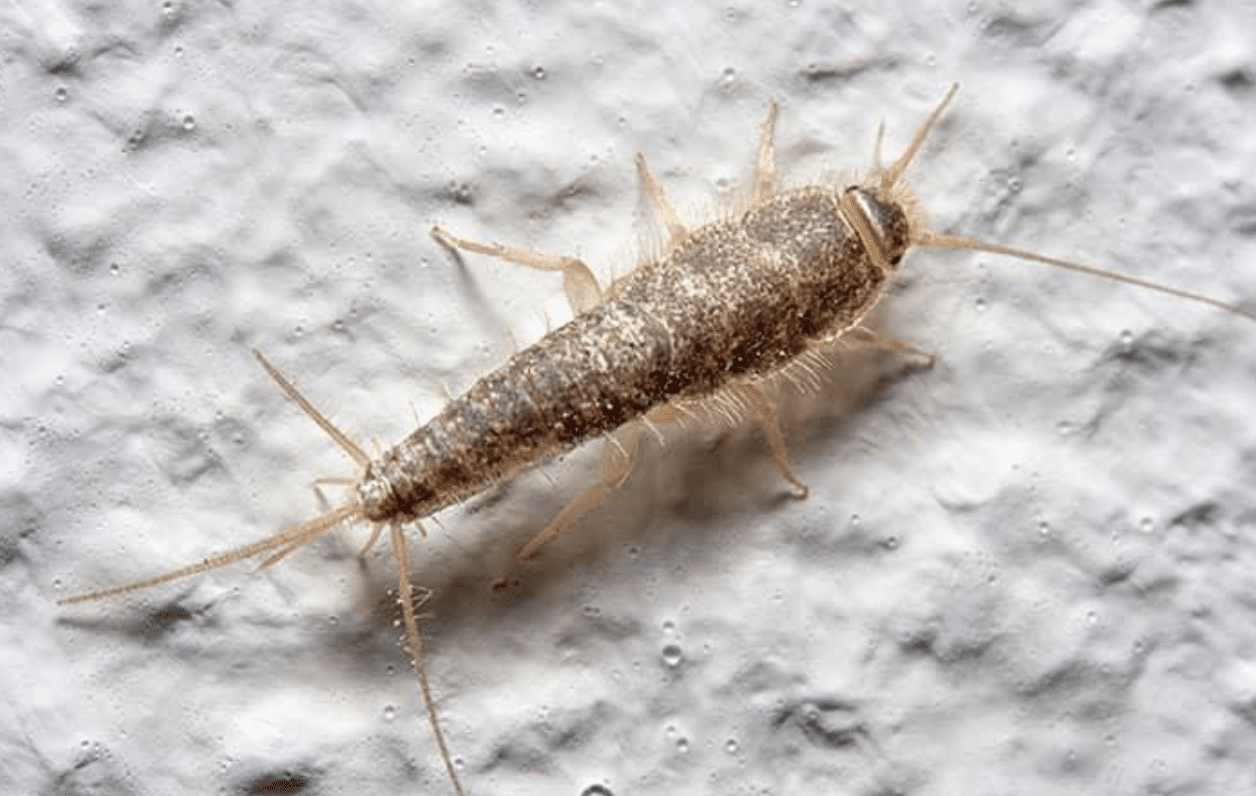All household insect pests get bad raps for one reason or another. I get it. I grew up with a mother who had a healthy disdain for any critter that belonged outside of her clean house. Silverfish are certainly among these and can cause a lot of damage to the items in our homes that they like to eat. It is those items that we keep and the cozy environments that we create in our homes that attract them in the first place. In that way, we are complicit in their success.
Silverfish are commensal or synanthropic with humans because we provide them with food and a relatively safe place to live. Silverfish feed on materials high in starch, glue, and cellulose – especially books and boxes of papers tucked away in a closet or attic. They also feed on sugars, linens, silk, cotton, dead insects, and like roaches, foodstuffs that accumulate in our “clean” homes.
Our common silverfish is one of 13 species in the Order Zygentoma reported from North America. Of these, three are native with many able to live on their own, in leaf litter or under logs and rocks. Many species were introduced to areas outside of their original native lands, largely because they moved with man – tucked away in those items that we take with us. Their spread across the globe is our doing.
But knowing a bit about your real or perceived enemy is always best, so here are a few tidbits about the life of these insects to consider before you condemn them completely. For one, these insects are part of one of the oldest orders of insects, with fossils dating back 400 million years. Unlike the so-called advanced groups, these insects are wingless and undergo a simple form of metamorphosis.
Upon hatching, young resemble adults and simply grow larger at every molt until they reach adulthood. Some species can live upwards of 4-5 years. Their diverse diet choices have served them well over the millennia, especially given humans have only been around for less than 300,000 years. They can certainly fare well on their own. They are fed upon by spiders, centipedes, and earwigs, and at times, each other.
In the good column of characteristics, they do not spread diseases like other insect pests. The common silverfish do, however, make a mess of your books, old paper files, and like clothes moths, that old suit that doesn’t fit you anymore. In the U.S., the most common species is Lepisma saccharinum – the species name reflecting their taste for carbohydrates, like sugars and starches. This species is the only one in this group that carries the common name silverfish – for its coat of silver scales.
So, although we may have come to abhor the sight of these insects because we consider them pests, and that they may have just eaten your favorite book, we should also applaud them for their resourcefulness in accepting our kindness in providing them with good homes, right? OK, perhaps not. But they are just doing what any good insect does, living life one day at a time.
Hope to see you in our great outdoors!




